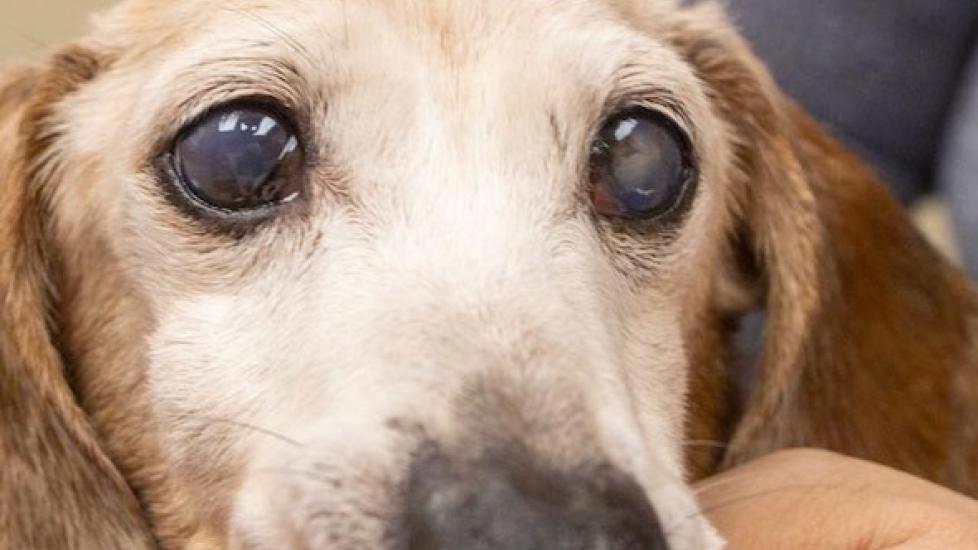Title: Unveiling the Mystery Behind Cloudy Doggie Eyes
Introduction:
In a world where our furry companions are often considered part of the family, it’s natural to worry when they exhibit signs of health issues. One such concern is the appearance of cloudy eyes in dogs. While this condition can be alarming, understanding its causes and treatments can provide peace of mind for pet owners. Let us embark on a journey to unravel the mystery behind those foggy canine peepers.
Causes of Cloudy Eyes:
The medical term for cloudy eyes in dogs is corneal opacity or cataract. Cataracts occur when the lens of the eye becomes clouded due to protein buildup, while corneal opacity refers to cloudiness affecting the transparent outer layer of the eye (the cornea). Here are some common reasons why your dog might have cloudy eyes:
- Age-Related Changes: Just like humans, aging can take a toll on a dog’s vision. As pets get older, their lenses may harden and become opaque, leading to cataracts.
- Genetics: Certain breeds are predisposed to developing cataracts due to genetic factors. For instance, Bulldogs, Cocker Spaniels, and Golden Retrievers are known to have higher incidences of inherited cataracts.
- Diabetes Mellitus: High blood sugar levels associated with diabetes can cause changes within the lens that lead to cataracts.
- Trauma: Direct blows to the eye or other forms of trauma can damage the lens or cornea, resulting in cloudiness.
- Infections: Bacterial or viral infections can sometimes manifest as inflammation and subsequent scarring of the cornea, contributing to a hazy look.
- Ultraviolet Radiation: Prolonged exposure to UV rays without proper eye protection can lead to photokeratitis, which may result in corneal scars and opacity.
Symptoms to Watch Out For:
Besides the obvious clouding of the eyes, you might notice these additional symptoms accompanying the condition:
- Redness around the eyes
- Squinting or pawing at the face
- Sensitivity to light
- Decreased visual acuity (your dog may bump into objects more frequently)
- Change in behavior (e.g., loss of interest in playing or exploring)
Treatment Options:
If caught early enough, certain types of cataracts or corneal opacities may respond well to treatment. The appropriate course of action depends on the underlying cause but could include:
- Medications: Anti-inflammatory drugs, antibiotics, or corticosteroids might help reduce swelling and promote healing if an infection or injury is present.
- Surgery: In cases of mature cataracts, surgical removal may be necessary. Advanced techniques such as phacoemulsification offer high success rates and can significantly improve a dog’s quality of life.
- Lifestyle Adjustments: If vision cannot be fully restored, making accommodations at home (such as providing ramps instead of stairs) can assist your dog in navigating daily activities.
Prevention Strategies:
While not all instances of cloudy eyes can be prevented, taking proactive steps can minimize the risk:
- Regular Veterinary Checkups: Early detection through regular exams allows veterinarians to treat conditions before they progress.
- Genetic Testing: Consider testing breeding stock to avoid passing along hereditary diseases.
- Eye Protection: Use protective eyewear for dogs during outdoor activities to shield them from harmful UV radiation.
- Weight Management: Keeping diabetic dogs at a stable weight can help maintain good control over their insulin levels and glucose metabolism.
Conclusion:
Clouded eyes in dogs need not signify the end of a bright future; rather, they represent an opportunity to demonstrate our dedication as pet parents by seeking veterinary care promptly and committing to long-term management strategies. By staying vigilant about our canines’ health and well-being, we ensure that their days continue to shine brightly, regardless of what clouds may cross their path.
